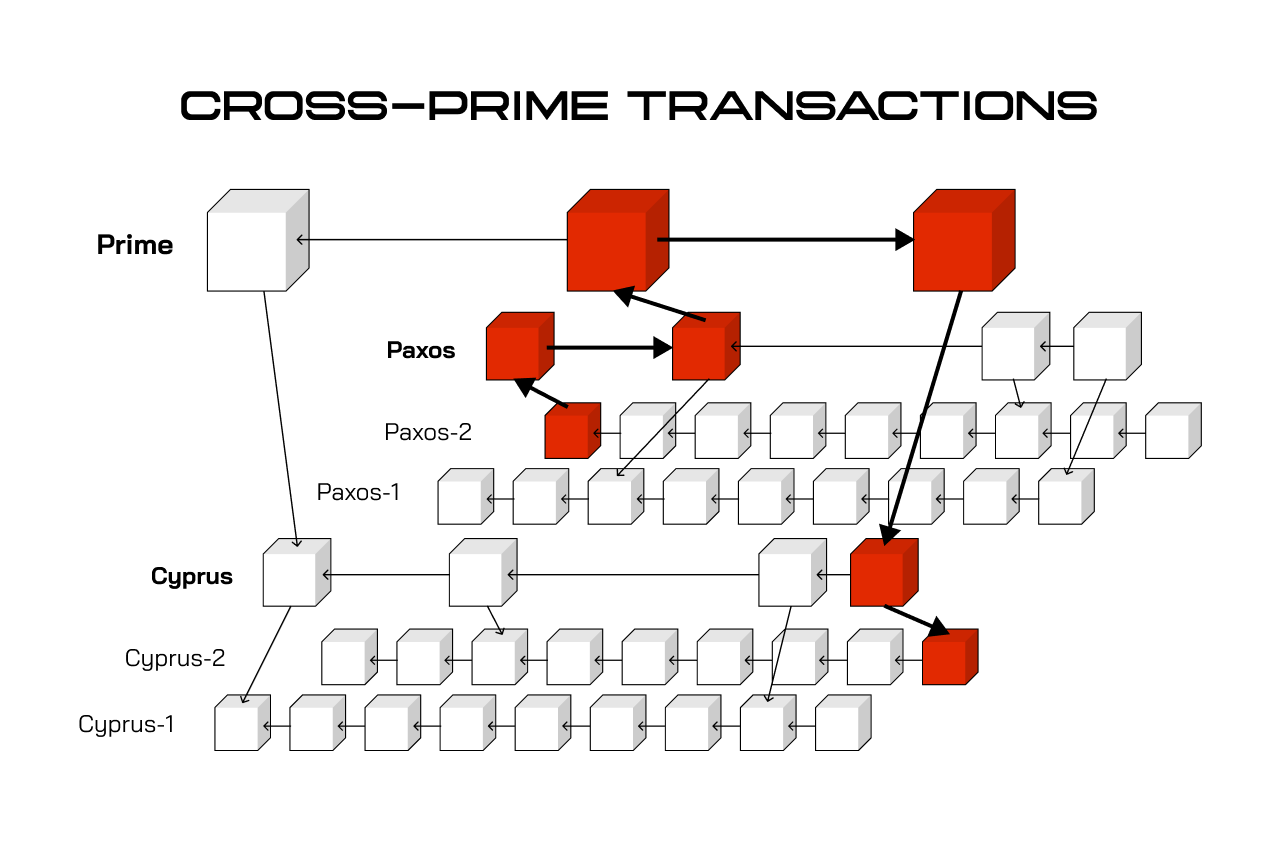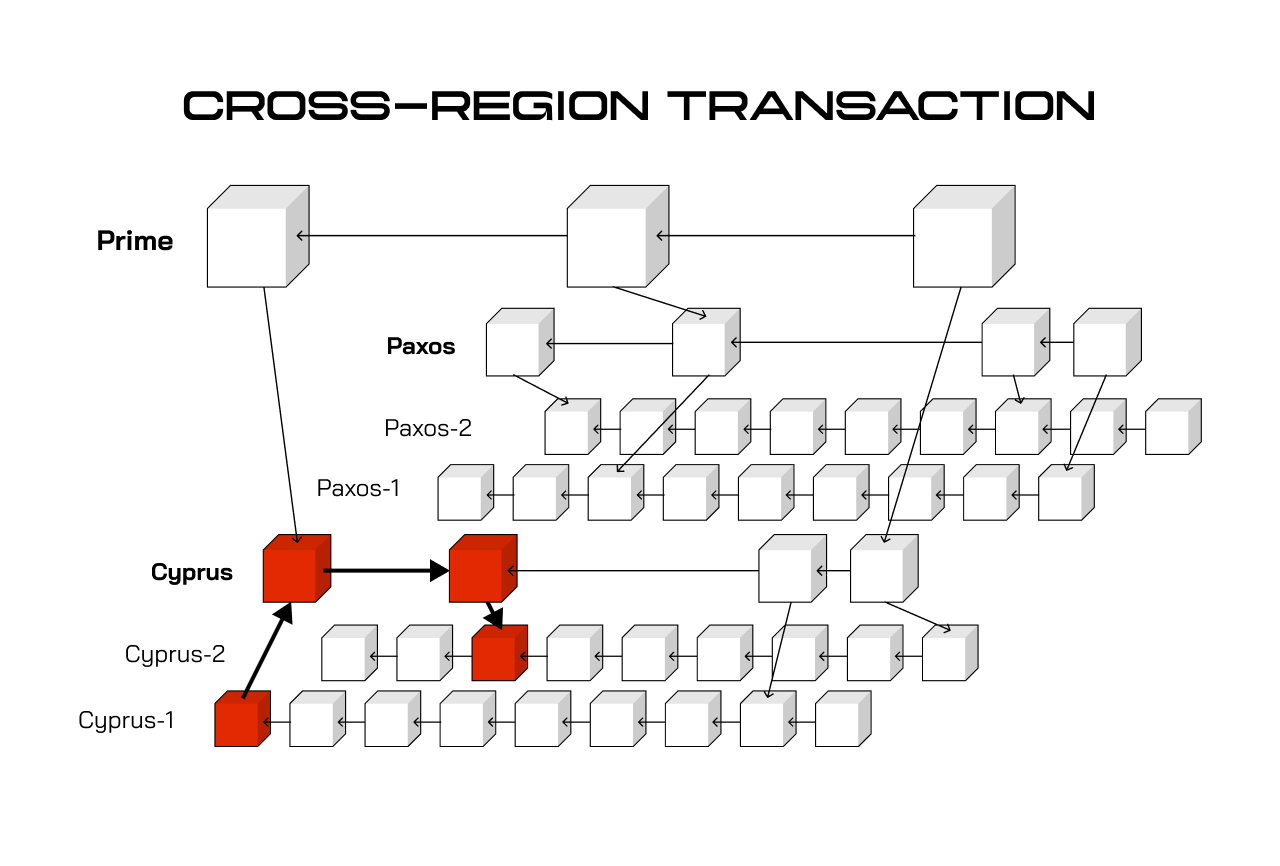Understanding External Transactions
In most blockchain networks, moving assets between chains is a complex process involving wrapped tokens, bridge operators, and significant trust assumptions. Users often lose funds to bridge hacks, experience long delays, or pay excessive fees. External Transactions (ETXs) in Quai Network represent a fundamental reimagining of how blockchains can communicate. An ETX is a native cross-chain transaction that moves value between Quai zones without any external dependencies. These transactions leverage the same hash-linked references that keep all chains synchronized, making them as secure as regular on-chain transfers. No bridge operators, no wrapped tokens, no trust assumptions - just pure cryptographic guarantees. The Journey of an ETX: Every ETX follows a deterministic path through Quai’s hierarchy. Like water flowing through a river system, transactions always flow up to a confluence point (dominant chain) before flowing back down to their destination. This predictable routing ensures security while maintaining efficiency. ETXs always pass through a dominant chain in the hierarchy, whether it be a Region chain or the Prime chain. The following diagrams illustrate these two routing patterns:

How ETXs Navigate the Network
Understanding how ETXs move through Quai’s hierarchy is crucial for developers and users alike. The system is designed to be both secure and efficient, ensuring that cross-chain transfers complete reliably without creating bottlenecks in the network. Each ETX begins its journey on what we call the “origin chain” - the zone where the transaction is initiated. The final destination is appropriately called the “destination chain.” Between these two points, the transaction follows a specific path: up through the hierarchy to a shared dominant chain, then back down to the destination. This routing happens automatically based on the destination address. Two Types of Cross-Chain Operations: Quai supports two distinct types of ETXs, each serving different use cases:- Account-initiated ETXs: Regular users sending assets between zones
- Contract-initiated ETXs: Smart contracts triggering cross-chain operations programmatically
Account-Initiated ETXs: User Transfers
Account-initiated ETXs represent the most common type of cross-chain transaction - users moving their assets between zones. These transactions follow a predictable two-phase process that ensures security while maintaining reasonable speed. Understanding this process helps users set appropriate expectations for cross-chain transfers. The journey begins when a user initiates a transfer to an address on a different zone. The network automatically recognizes this as a cross-chain operation based on the destination address format and begins the ETX process. From the user’s perspective, they simply specify the recipient address and amount - the complexity is handled entirely by the protocol.Phase 1: Moving Up the Hierarchy
The first phase involves moving the transaction data up through the network hierarchy until it reaches a chain that can coordinate with the destination zone. This upward propagation follows these steps:- Initial broadcast: The transaction is submitted to the origin zone as a standard internal transaction
- Local processing: Miners on the origin zone include the transaction in a block, removing the balance from the sender and creating one or more ETXs
- Upward propagation: The ETX data is forwarded to dominant chains in the hierarchy
- Coincident block collection: When coincident blocks occur, dominant chains collect all pending ETXs from their subordinate zones
- Continued escalation: If the destination requires coordination through an even higher chain (like Prime), the process repeats upward
Phase 2: Objective Canonicalization and Delivery
Once the ETX reaches the coordination point, the critical process of objective canonicalization begins. This phase leverages Quai’s hash-linked reference system to ensure that only valid, canonical ETXs are executed:- Hash-linked reference creation: When coincident blocks are found, pending ETXs are collected from each hash in the subordinate manifest of each block since the last coincident block from the same location
- Objective canonicalization: All ETXs destined for the current chain or subordinate chains are identified and become referenceable through these objective hash-linked proofs
- Precomputed state propagation: The canonicalized ETXs are propagated to the destination chain, where they’re added to the pending ETX set and become available for mining
- Final execution with proof: The ETX is included in a block on the destination chain only after the objective hash reference proves the canonicalization of the emitted ETX, adding the balance to the receiving address
Contract-Initiated ETXs: Smart Contract Interactions
Contract-initiated ETXs enable smart contracts to trigger cross-chain operations programmatically, unlocking sophisticated multi-chain applications. The process leverages the same objective hash-linked reference system that ensures security, but adds smart contract logic to determine when cross-chain operations are needed.Phase 1: Smart Contract Logic and Upward Propagation
Smart contracts use specialized opcodes to make cross-chain decisions and emit ETXs when necessary:- Contract interaction initiation: A user calls a contract function, potentially triggering the ISADDRINTERNAL convenience opcode to check address locality
- Cross-chain decision: If ISADDRINTERNAL returns FALSE (indicating a cross-chain address) or other contract logic is triggered, the contract emits ETXs using OP_ETX
- Hierarchical propagation: The ETX(s) are propagated to dominant peers in the hierarchy
- Coincident block collection: When coincident blocks are found, dominant peers collect all pending ETXs through the subordinate manifest linkage
- Continued escalation: If the destination chain has a dominant chain (i.e., is a region chain), steps 3 and 4 repeat upward
Phase 2: Objective Canonicalization and Execution
The downward phase relies on Quai’s unique system of objective hash references to ensure ETX validity:- Hash-linked reference creation: When coincident blocks occur, pending ETXs are collected from each hash in the subordinate manifest of each block since the last coincident block
- Objective canonicalization: ETXs destined for the current chain or subordinate chains are identified and become referenceable through these hash-linked proofs
- Precomputed state availability: The pending ETXs are propagated to the destination chain and added to the pending ETX set, available for mining
- Final execution with proof: The ETX is included in a destination chain block only after the objective hash reference proves the canonicalization of the emitted ETX
Forward Propagation of ETX Rollups
One of Quai’s key innovations is its efficiency in handling large volumes of cross-chain transactions. Traditional systems process each cross-chain operation individually, creating significant computational overhead. Quai implements a sophisticated rollup mechanism that batches and pre-processes ETX data, reducing computational requirements by more than 30x while maintaining security. Block Header Data Fields: Each Quai block header contains two specialized fields for ETX management:- etxTransactions: A list of hashes, where each hash represents a unique ETX emitted from that specific block
- etxRollupRoot: A single hash representing a cumulative rollup of all ETXs emitted since the previous coincident block
